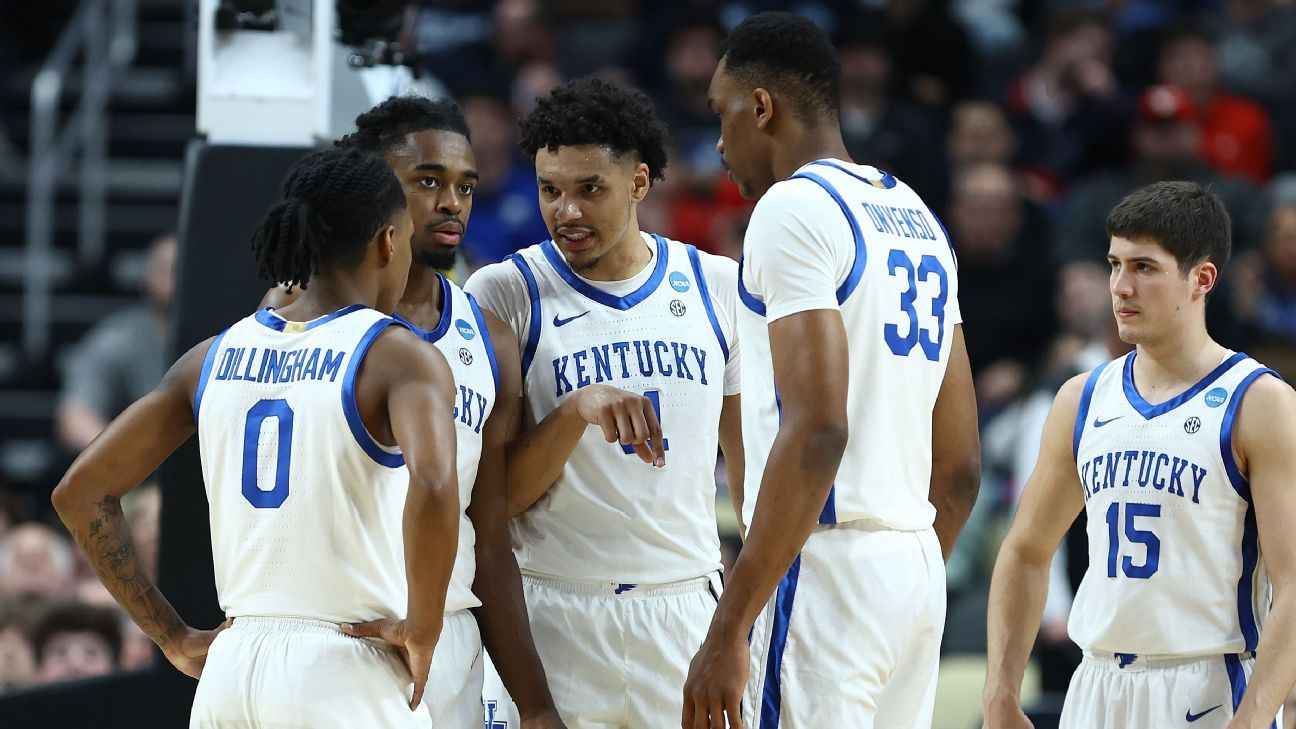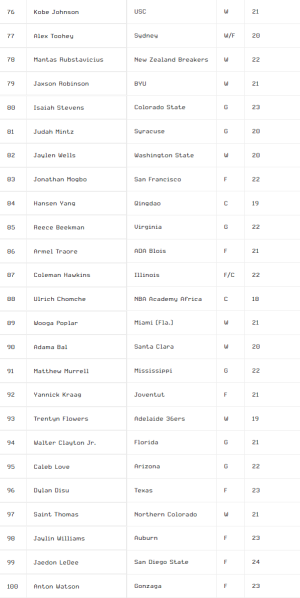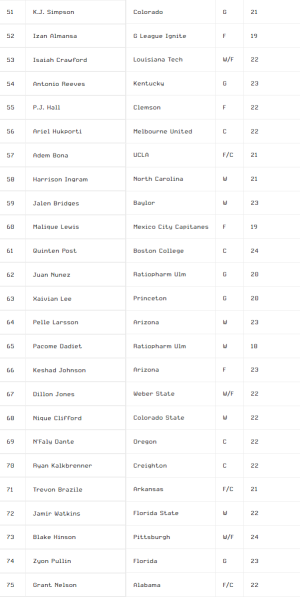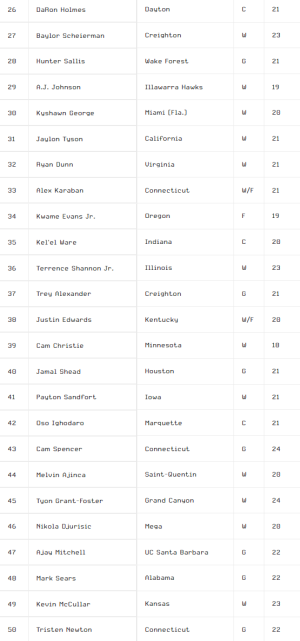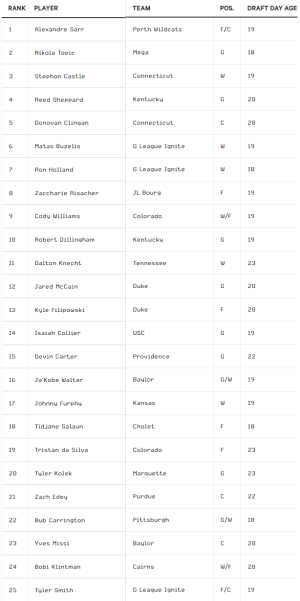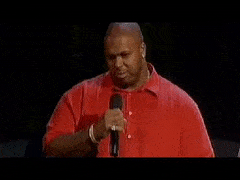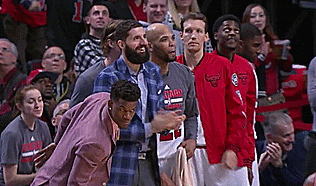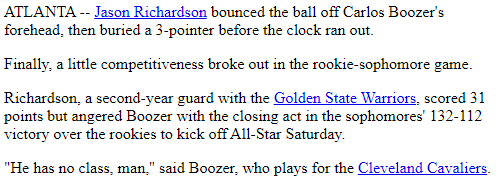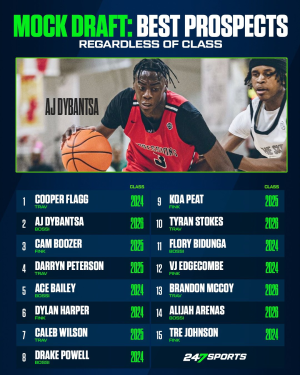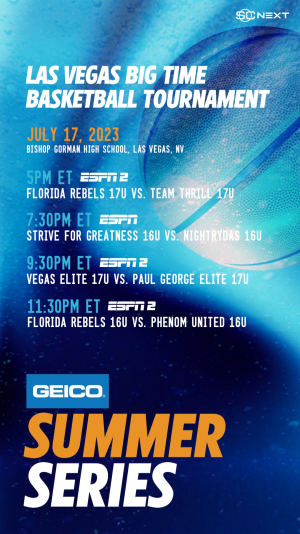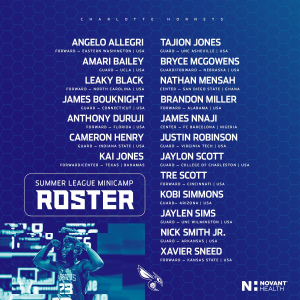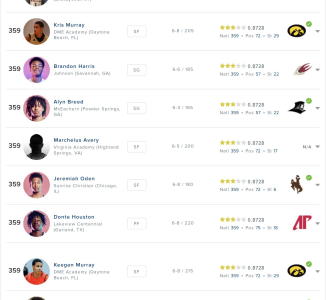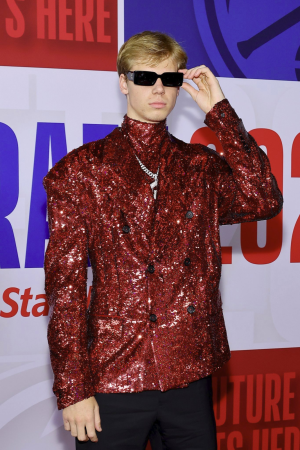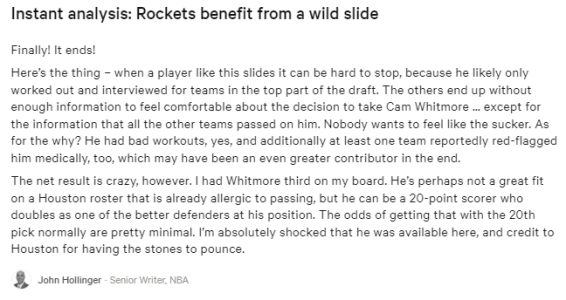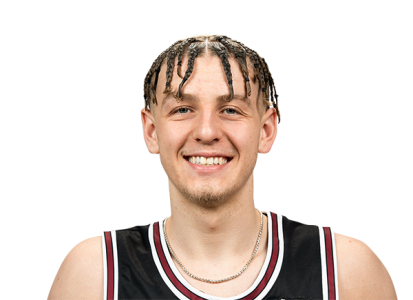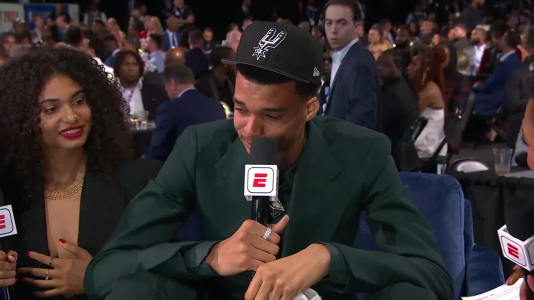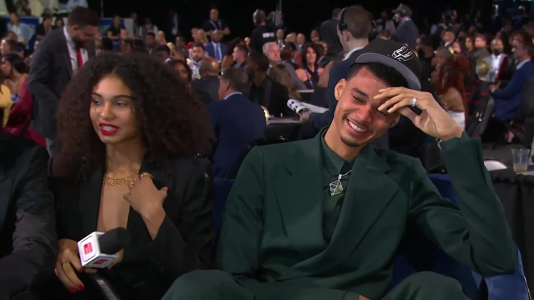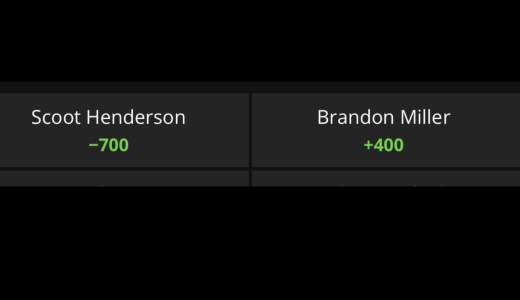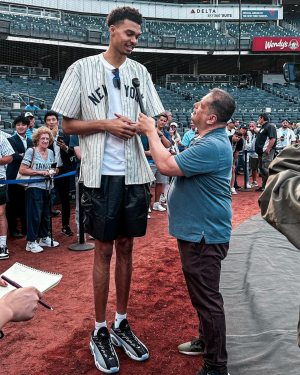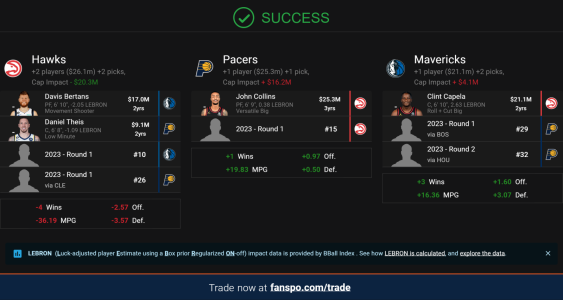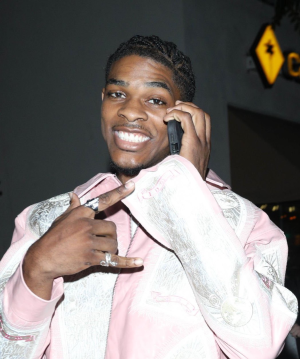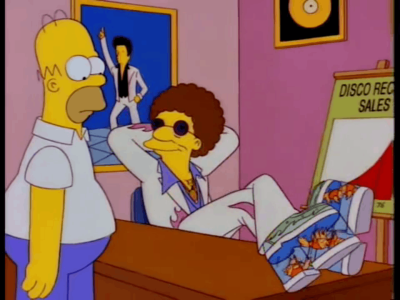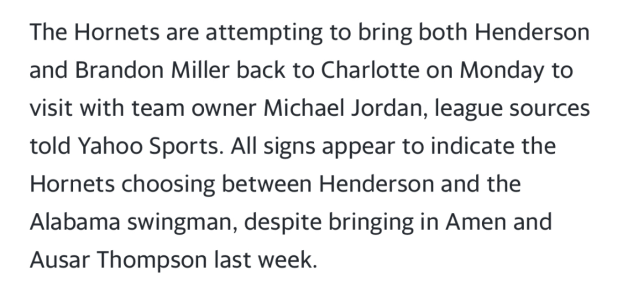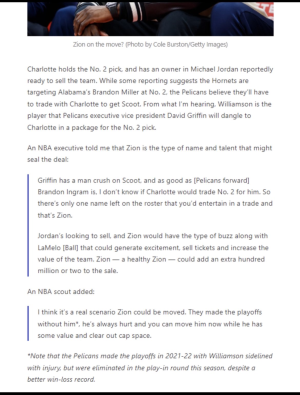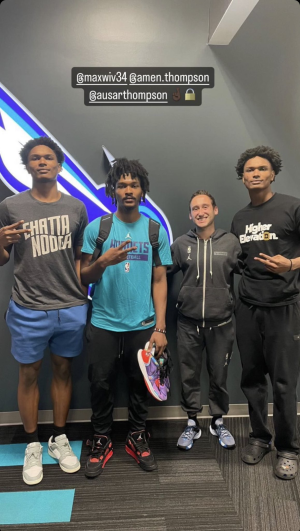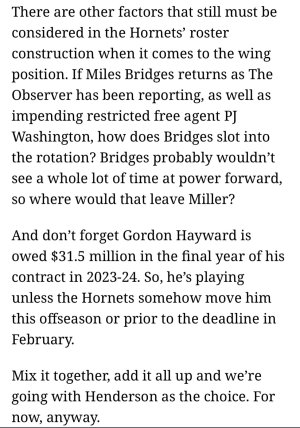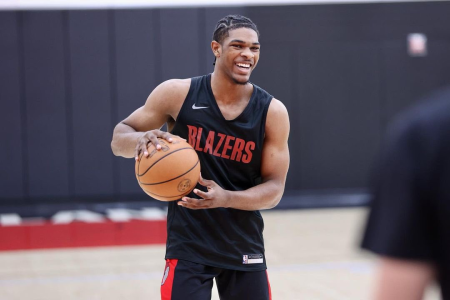- 85,894
- 112,356
- Joined
- Sep 5, 2010
2024 NBA mock draft: Kentucky's prospects sent packing and Zach Edey's impressive tournament run
The NCAA tournament got off to a wild start on Thursday as No. 3 seed Kentucky was upset by No. 14 seed Oakland 80-76, behind an incredible shooting performance from Jack Gohlke, who made 10 3s while scoring 32 points.
This result put a major damper on NBA scouting this month, as Kentucky had the top two prospects in the NCAA tournament and seven of the top 33 prospects in the competition.
Kentucky has been a poor defensive team all year and continued to show an alarming lack of attention to detail, allowing the Golden Grizzlies to get any shot they wanted all game. The Wildcats didn't make any in-game adjustments, as they were unable to match Oakland's scoring prowess while playing oversized lineups with too many non-shooters, shrinking the floor and making it difficult for their guards to find space to operate against Oakland's zone.
Two prospects advancing to the Sweet 16 are Tennessee's Dalton Knecht and Purdue's Zach Edey. Knecht struggled from deep (1-for- against Texas but made four free throws down the stretch to help the Volunteers advance.
against Texas but made four free throws down the stretch to help the Volunteers advance.
Edey and the Boilermakers erased last season's loss to No. 16 Fairleigh Dickinson with impressive wins versus Grambling and Utah State. The 7-foot-4 center averaged 26.5 points and 17.5 rebounds in the two games.
ESPN NBA draft insiders Jonathan Givony and Jeremy Woo recap the first weekend of the 2024 NCAA tournament and provide an updated mock draft.
2024 NBA mock draft
The draft order is based on ESPN projections and reflects the current state of picks owed and owned:
FIRST ROUND
1. Detroit Pistons
Zaccharie Risacher | JL Bourg | SF | Age: 18.9
2. Washington Wizards
Alex Sarr | Perth Wildcats | PF/C | Age: 18.9
3. San Antonio Spurs
Rob Dillingham | Kentucky | PG | Age: 19.2
4. Charlotte Hornets
Nikola Topic | Mega MIS | PG | Age: 18.6
5. Portland Trail Blazers
Donovan Clingan | UConn | C | Age: 20.0
6. Toronto Raptors (San Antonio Spurs have if 7-30)
Matas Buzelis | G League Ignite | SF | Age: 19.4
7. Memphis Grizzlies
Reed Sheppard | Kentucky | PG/SG | Age: 19.7
8. Houston Rockets (via Brooklyn Nets)
Dalton Knecht | Tennessee | SF | Age: 22.9
9. Utah Jazz (Oklahoma City Thunder have if 11-30)
Cody Williams | Colorado | SF | Age: 19.3
10. Atlanta Hawks
Isaiah Collier | USC | PG | Age: 19.4
11. Oklahoma City Thunder (via Houston Rockets)
Ja'Kobe Walter | Baylor | SG | Age: 19.5
12. Chicago Bulls
Ron Holland | G League Ignite | SF | Age: 18.7
13. Portland Trail Blazers (via Golden State Warriors)
Tidjane Salaun | Cholet | PF | Age: 18.6
14. New Orleans Pelicans (via Los Angeles Lakers)*
Zach Edey | Purdue | C | Age: 21.8
15. Philadelphia 76ers
Kyle Filipowski | Duke | PF/C | Age: 20.3
16. Toronto Raptors (via Indiana Pacers)
Devin Carter | Providence | PG/SG | Age: 22.0
17. Atlanta Hawks (via Sacramento Kings)
Stephon Castle | UConn | PG/SG | Age: 19.3
18. Miami Heat
Tristan da Silva | Colorado | SF/PF | Age: 22.8
19. Phoenix Suns
Jared McCain | Duke | PG | Age: 20.0
20. New York Knicks (via Dallas Mavericks)
Yves Missi | Baylor | C | Age: 19.8
21. Orlando Magic
Tyler Smith | G League Ignite | SF/PF | Age: 19.3
22. New York Knicks
Kevin McCullar Jr. | Kansas | SF | Age: 23.0
23. New Orleans Pelicans
Bobi Klintman | Cairns Taipans | SF/PF | Age: 21.0
24. Cleveland Cavaliers
Juan Nunez | Ratiopharm Ulm | PG | Age: 19.8
25. Washington Wizards (via LA Clippers)
Kyshawn George | Miami | SG/SF | Age: 20.2
26. Milwaukee Bucks
Kel'el Ware | Indiana | C | Age: 19.9
27. Minnesota Timberwolves
Carlton Carrington | Pittsburgh | PG/SG | Age: 18.6
28. Utah Jazz (via Oklahoma City Thunder)
Johnny Furphy | Kansas | SG/SF | Age: 19.2
29. Denver Nuggets
Tyler Kolek | Marquette | PG | Age: 22.9
30. Boston Celtics
Justin Edwards | Kentucky | SG/SF | Age: 20.2
* The Pelicans can defer the Lakers' first-round pick to 2025
SECOND ROUND
31. Toronto Raptors (via Detroit Pistons)
Ryan Dunn | Virginia | SF | Age: 21.2
32. Utah Jazz (via Washington Wizards)
Jaylon Tyson | California | SG/SF | Age: 21.3
33. San Antonio Spurs
Terrence Shannon Jr. | Illinois | SG/SG | Age: 23.6
34. Portland Trail Blazers (via Charlotte Hornets)
Payton Sandfort | Iowa | SF | Age: 21.7
35. Milwaukee Bucks (via Portland Trail Blazers)
Dillon Jones | Weber State | SF/PF | Age: 22.4
36. Indiana Pacers (via Toronto Raptors)
Izan Almansa | G League Ignite | PF/C | Age: 18.7
37. Minnesota Timberwolves (via Memphis Grizzlies)
Melvin Ajinca | Saint Quentin | SG/SF | Age: 19.7
38. Memphis Grizzlies (via Brooklyn Nets)
Keshad Johnson | Arizona | PF | Age: 22.7
39. New York Knicks (via Utah Jazz)
KJ Simpson | Colorado | PG | Age: 21.6
40. Portland Trail Blazers (via Atlanta Hawks)
Trevon Brazile | Arkansas | PF | Age: 21.2
41. Charlotte Hornets (via Houston Rockets)
Pelle Larsson | Arizona | SG | Age: 23.0
42. Philadelphia 76ers (via Chicago Bulls)
Ulrich Chomche | NBA Academy Showcase | PF/C | Age: 18.2
43. Houston Rockets (via Golden State Warriors)
Pacome Dadiet | Ratiopharm Ulm | SG/SF | Age: 18.6
44. San Antonio Spurs (via Los Angeles Lakers)
Baylor Scheierman | Creighton | SG/SF | Age: 23.4
45. LA Clippers (via Indiana Pacers)
Ugonna Onyenso | Kentucky | PF/C | Age: 19.4
46. Sacramento Kings
D.J. Wagner | Kentucky | PG/SG | Age: 18.8
47. Miami Heat
Harrison Ingram | North Carolina | SF/PF | Age: 21.3
48. Washington Wizards (via Phoenix Suns)
Hunter Sallis | Wake Forest | SG | Age: 20.9
49. Boston Celtics (via Dallas Mavericks)
Adem Bona | UCLA | C | Age: 20.9
50. Orlando Magic
Alex Karaban | UConn | PF | Age: 21.3
51. Detroit Pistons (via New York Knicks)
Mantas Rubstavicius | NZ Breakers | SF | Age: 21.8
52. Indiana Pacers (via New Orleans Pelicans)
DaRon Holmes II | Dayton | PF/C | Age: 21.6
53. Indiana Pacers (via Cleveland Cavaliers)
PJ Hall | Clemson | PF/C | Age: 22.0
54. Los Angeles Lakers (via LA Clippers)
Ajay Mitchell | UC Santa Barbara | PG | Age: 21.7
55. Golden State Warriors (via Milwaukee Bucks)
Jaxson Robinson | BYU | SG/SF | Age: 21.3
56. Denver Nuggets (via Minnesota Timberwolves)
Ryan Kalkbrenner | Creighton | C | Age: 22.1
57. Memphis Grizzlies (via Oklahoma City Thunder)
Jalen Bridges | Baylor | SF | Age: 22.8
58. Dallas Mavericks (via Boston Celtics)
Oso Ighodaro | Marquette | PF/C | Age: 21.6
Note: The Philadelphia 76ers and Phoenix Suns forfeited a 2024 second-round draft pick.
Kentucky's prospects exit early
Rob Dillingham | PG | Kentucky | Age: 19.2 | Top 100: No. 3
Dillingham played a poor game by his standards, looking unusually tentative -- he didn't attempt a field goal for the first 17 minutes of the game -- as Kentucky looked to pound the ball into the paint to capitalize on its size advantage. He moved the ball unselfishly for much of a cold shooting night before finally draining a 25-foot pullup 3 in transition near the end of the first half. Dillingham was asked to make magic late in the game and had some chaotic moments trying to create frenetically with the game on the line, which resulted in some poor shots. He made a huge sidestep 3-pointer with a minute left to cut Oakland's lead to one with a minute left, but generally didn't look like himself for much of the night.
Dillingham's defensive concerns, including poor technique, discipline and awareness, were on display in the loss, as he had a multitude of poor possessions leaking points throughout the game. He proved easy for Oakland's guards to rise over for jumpers, failed to get into any kind of defensive stance, and was directly responsible for the most important basket Oakland scored -- digging down aimlessly off the corner for a steal and allowing his man to step into a wide open 3 with 29 seconds left, putting his team down four.
This is a disappointing way for Dillingham's season to end but it doesn't change how well he played all year. He finished the season averaging 15.2 points and 3.9 assists over 23.3 minutes per game while shooting 44% from 3, including some incredibly memorable performances showing why he's the most talented ballhandler and shot-creator in the draft. As Dillingham's career unfolds, Kentucky fans will wonder what would have happened if coach John Calipari had fully empowered and unleashed him as the starting point guard from Day 1, rather than coming off the bench and giving D.J. Wagner 26 minutes per game, for which they predictably saw no benefit in their most important game. Dillingham's speed, shot-making and star power look tailor-made for the NBA game, but the way his season ended will not help his cause for being a top draft pick. -- Jonathan Givony
Reed Sheppard | PG | Kentucky | Age: 19.7 | Top 100: No. 7
Sheppard had his worst game of the season in possibly his final appearance for Kentucky, a disappointing outcome after an incredible freshman campaign. We've never seen Sheppard play such a tentative, anxious style as he did versus Oakland, passing on open 3s, playing with the brakes on, throwing the ball everywhere uncharacteristically and not scoring his first points until the 6:03 minute mark in the second half. He was nowhere close on an off-balance 25-foot pull-up 3 with 23 seconds that sealed the loss.
The concerns about Sheppard's poor defensive potential due to his limited physical tools were also on display. He struggled getting around screens all game with his thin frame and it proved easy for the 6-2 Gohlke to rise up and over for jumpers with poor contests due to his 6-3 wingspan. He got lost off the ball on several occasions, beat off the bounce one-on-one, and didn't come up with a rebound in a game that Kentucky was outrebounded, 40-39.
NBA teams already had some concerns about Sheppard's defense and ability to ramp up his usage in a heavier on-ball role. At 6-2, there's little doubt that Sheppard will need to spend heavy minutes at point guard in the NBA, and his passive showing versus Oakland wasn't a great way to answer those questions.
Still, this is just one of 33 games Sheppard played in what was, ultimately, a remarkable season from a productivity and efficiency standpoint.
NBA teams are still quite high on Sheppard and it's very hard to see him not being a lottery -- if not a top-10 -- pick ultimately should he enter the draft. -- Givony
Justin Edwards | SF | Kentucky | Age: 20.2 | Top 100: No. 29
Edwards only played 16 minutes after a cold start, going scoreless in the first half but looking aggressive with 10 second-half points. Two plays will stick in the memory of fans and scouts: a missed layup and a dunk showing his distinct lack of explosiveness that's hampered him all season.
Edwards' failure to develop into the wing-stopper Kentucky needed really hampered the team's development this season, and it was surprising not to see him (or Adou Thiero) get a turn trying to slow down Oakland's Gohlke, as he had some solid moments in the game.
Edwards' play late in the season, especially as a perimeter shooter, has likely done enough to put him back in first-round conversations this spring, but he still has plenty of work to do to solidify his standing in his class. The first step will be trying to improve his frame, which several NBA teams have pointed out he added quite a bit of bad weight to. He gained 20 pounds from October of his senior year of high school to Kentucky's pro day in October 2023, and seems to have lost some explosiveness in the process, which he can hopefully recapture during the pre-draft process. -- Givony
D.J. Wagner | PG | Kentucky | Age: 18.8 | Top 100: No. 46
Wagner's difficult freshman season came to a close with a poor showing (zero points, two rebounds, three assists, 0-for-5 shooting in 18 minutes) that didn't come as a major surprise based on his play this year. He was ice cold trying to make open 3s that he was dared to take, looked anxious and sped up trying to attack the zone, and was lost off the ball or late getting over screens trying to slow down Oakland's guards. He only played five second-half minutes, and the 18-year-old now has a difficult decision to make after an uneven campaign where he shot 47% from 2 and 29% from 3. The market for streaky shooting, undersized guards in Wagner's mold isn't very robust among NBA teams currently, especially considering how far away he looks from being able to help a team. Wagner has the option of returning to Kentucky for his sophomore year, transferring to a lower level where he can be the sole focal point on a team, or force the issue and work his way up the NBA ranks through the G League. -- Givony
Antonio Reeves | SG | Kentucky | Age: 23.3 | Top 100: No. 64
It's hard to fault Reeves for the way Kentucky's season ended, as his efficient 27 points (5-of-9 from 3) kept Kentucky in the hunt against Oakland, continuing what was a wonderful fifth-year campaign for the 23-year-old wing. He turned himself into one of the best shooters in college, while doing quite a bit of damage with his polished scoring instincts inside the arc as well. Reeves' shortcomings as a defender and passer were again evident, things that likely render him a two-way contract candidate given his age. He struggled to get around screens with his thin frame, got moved around too easily inside the arc, and had some bad moments lunging on closeouts wildly and giving up good looks on the perimeter. Reeves' diverse shot-making prowess and ability to score skillfully attacking closeouts, using screens and in the open floor give him a niche he can hang his hat on as a bench scorer, and he'll surely get opportunities to show how his game translates considering how well he performed all season in front of NBA executives. -- Givony
Prospects advancing to the Sweet 16
Donovan Clingan | C | UConn | Age: 20.0 | Top 100: 5
Clingan single-handedly changed the complexion of UConn's Round of 32 matchup with Northwestern, putting a lid on the basket and making the contest feel over almost as soon as it started on Sunday. Clingan is moving like a different person compared to three months ago, covering ground exceptionally well comparatively and giving UConn a plethora of ways in which to guard ball screens. He was hedging well out beyond the 3-point line for much of the first half, having the agility to extinguish the ballhandler at the level of the screen before recovering back to the paint and contesting shots at the rim, blocking eight shots in 27 minutes.
His much-improved conditioning is allowing him to make multiple efforts going up to protect the rim and then flipping his hips to go right back up again, blocking shots with both hands and showing impressive timing and instincts while usually keeping the ball in bounds so his team can retain possession. Clingan also crashed the boards, finishing with 14 rebounds to go with 14 points and doing a decent amount of facilitation as a hub for UConn's offense. Still, it was his work defensively that stood out most vividly and the skill set that gives him a chance to be a true difference-maker on that end of the floor in the NBA. -- Givony
Dalton Knecht | SG/SF | Tennessee | Age: 22.9 | Top 100: No. 8
Knecht had his worst shooting game of the season -- going 1-of-8 from 3 and 5-of-18 overall -- but made enough plays late to stay alive in Tennessee's narrow win over Texas to advance to the Sweet 16.
The Longhorns hounded him on and off the ball all game long, throwing multiple bodies in an attempt to slow him down, but he also missed some open looks that he normally makes.
Knecht had some shaky moments as a ballhandler and decision-maker, running into walls and having a tough time finishing around the basket. His defense, not known as his strong suit, wasn't great as he gambled for steals, got caught ball-watching on backdoor cuts, and looked upright while giving up straight line drives. To his credit, he kept competing and found ways to be productive, crashing the offensive glass for a putback dunk, cutting off the baseline for another emphatic finish, and hitting four pressure-packed free throws to ice the game.
A stern test with Creighton awaits on Friday in what should be a highly entertaining contest with plenty of NBA prospects, which will be monitored closely by scouts. -- Givony
Zach Edey | C | Purdue | Age: 21.8 | Top 100: No. 14
Edey and Purdue steamrolled through the first two games of the tournament, setting a school tournament record with 106 points against Utah State on Sunday, with Edey turning in 23 points and 14 rebounds in just 26 minutes. He had 30 points and 21 rebounds against Grambling in the first round, continuing his historically dominant run as Purdue aims to erase the memory of last year's first-round loss.
It's all par for the course for Edey at this point. It's evident how dominant he is at the college level, not only with his size, but with his motor and competitive nature. NBA teams are trying to solve for what it means in terms of projecting him into the right role within a winning framework. Purdue will play No. 5-seed Gonzaga in the Sweet 16, with the winner of Creighton and Tennessee awaiting after that -- a reasonable pathway to a potential Final Four berth. A possible Elite Eight matchup against Creighton's star rim protector 7-1 Ryan Kalkbrenner would give scouts something new from a matchup perspective.
It's hard to get overly nitpicky about Edey's remarkable season at this point. But the deeper Purdue can go in the tournament, the longer NBA teams have to consider the ways in which his unique mix of size, strength and production might break the current conventional mold for big men at their level, no matter what he may give up defensively. -- Woo
Jared McCain | PG/SG | Duke | Age: 20.0 | Top 100: 19
McCain was impressive versus James Madison right from the opening tip, dropping 22 first-half points (6-of-8 from 3) to give Duke a 22-point lead at half in the eventual 38-point victory. He drained step-back jumpers, 3s drifting off movement, rose up sharply in transition or from the corners, and showed polished footwork, pace and intelligence operating out of the pick and roll with tremendous confidence, all while never forcing anything and bringing excellent intensity defensively and on the glass. Now shooting 42% from 3 on the season, McCain's scoring instincts and versatile shot-making prowess gives him an easy niche he can fill in the NBA when combined with his feel for the game, toughness and aggressiveness. A tough task lies ahead on Friday with No. 1 seed Houston, one that also brings great promise in terms of McCain's NBA prospects if he can hold his own against the best defense in college basketball. -- Givony
Tyler Kolek | PG | Marquette | Age: 22.9 | Top 100: No. 29
Kolek returned this past week from an oblique injury that sidelined him since Feb. 28. While likely not playing at 100%, he impacted the game in several ways as usual, coming up big to lead Marquette to the Sweet 16 with wins over Western Kentucky (18 points and 11 assists) and Colorado (22 and 11). With Kentucky losing on Thursday, the Golden Eagles have a favorable pathway to the Elite Eight, with No. 11-seed NC State lying in wait in the Sweet 16, giving Kolek a great platform as well as another handful of days to rest and get healthier.
While it did come with some turnovers, Kolek's playmaking was terrific in the nail-biter against the Buffaloes, where he took full advantage of the matchup and was able to involve teammates and ultimately dictate the flow of the game enough to advance. An excellent improviser who excels going to his strong hand side, Kolek uses ball screens well and gets into the paint effectively despite a below-average athletic profile by NBA standards.
Kolek's limited tools will make him a bit more divisive than some other guards, but it's hard to deny the level at which he drives winning in college. The prospect of going further into the tournament creates another opportunity for him to extend his career and solidify himself as a potential first-rounder. -- Woo
Anton Watson | SF/PF | Gonzaga | Age: 23.4 | Top 100: No. 86
Watson played an essential role in Gonzaga's dominant weekend, defeating both McNeese State and Kansas by 21 points each to comfortably advance to the Sweet 16. His versatility was on full display in both contests, with 13 points, 13 rebounds and nine assists in the opener, followed by 21 points, six rebounds and two blocks versus the Jayhawks.
He played with non-stop intensity running the floor in transition, cutting off the ball, finishing above the rim impressively, defending guards and big men, and even hitting a 3-pointer. His instincts, timing and feel for the game are hard to come by at 6-8, giving him a real chance to carve out a role in the NBA if he can find a way to continue to improve his shooting range, which has long been considered his biggest weakness. Watson went 20-of-49 (41%) from 3 this season, but sports unorthodox, unreliable mechanics that allowed him to convert just 63% of his career free throw attempts, and caused him to pass up a lot of attempts from the perimeter.
An NBA team will check outWatson's versatility and smarts to see if they can help him make any gains in that department. If he does, there's a ready-made role-player there who has won an incredible amount of games at Gonzaga and still isn't done, with a huge matchup with Zach Edey and Purdue looming on Friday. -- Givony
Other NBA draft prospects making exits
Cody Williams | SG/SF | Colorado | Age: 19.3 | Top 100: No. 9
Williams' freshman season ended on a positive individual note in Colorado's loss to Marquette on Sunday, with 12 points and a pair of blocks in what was his best game in quite some time. It was important for scouts to see some signs of life from Williams after a difficult final stretch of the season that saw him work through a fractured orbital bone and an ankle injury. His minutes and role had been limited as a result, and with the Buffaloes having to play their way off the bubble to get into the tournament, Williams hadn't been much of a focal point. He was notably aggressive and looked quicker and more decisive getting into the paint versus Marquette chipping in on both ends of the floor and earning playing time in the closing minutes.
Williams' passing and size coupled with his excellent defensive upside makes him most interesting long-term if he can fashion himself into more of a point forward type of player, but there's a lot of work for him to do in order to become that. It's become evident that he's further away from helping an NBA team than we thought earlier in the season: Williams needs to get stronger physically in order to beat defenders to the rim and he has to refine his handle. It would help Williams to develop a deeper array of midrange counters, as he can be a bit predictable going into the paint right now. His jumper certainly isn't broken, but needs some work.
Teams have a variety of opinions on Williams, which has put his stock on more uncertain footing going into the pre-draft process. There's an argument for him to consider another year of college, particularly if Colorado commits to giving him on-ball reps and allows him to build his confidence and showcase his game as a playmaker. Still, the uncertain nature and this year's shallow draft pool might make turning pro a more lucrative decision if he can stabilize himself as a surefire lottery pick in the coming months. -- Woo
Tristan da Silva | SF/PF | Colorado | Age: 22.8 | Top 100: No. 18
One of the big winners of March thus far, da Silva finished his excellent senior season on a strong note, with Colorado beating Boise State and Florida before coming close to an upset of Marquette on Sunday. He scored 54 points and went 9-of-16 from 3 in three tournament games, playing an immensely important role for the Buffaloes on both ends of the floor and showcasing the versatility that makes him a pretty safe bet to find a spot in the NBA in relatively short order.
While not a high-volume scorer by nature, da Silva has the right array of skills to provide valuable connective tissue in different types of lineups, and he can do it on both ends of the floor. The knock on him long centered on his passive approach to scoring but he's taken a jump in that area, proving he can step up when called upon as a scorer, displaying a comfort level getting into his shot off the catch and off the dribble, as well as cutting and attacking closeouts. He's also a smart passer with solid positional size, making good decisions that should let him fit nicely alongside better talent.
Da Silva needs to get a bit stronger and could be more physical in general, but he's a fluid mover who can switch defensively, showcasing good acumen away from the ball in rotations., He has an ability to alter shots by closing out as well as around the basket and the agility to stay with smaller players. While not a stopper in one-on-one situations, he does project as a solid team defender out of the box, which coupled with his offensive game makes for a pretty attractive mix of skills. It's ultimately not too hard for coaches to find minutes for role players who do the things da Silva does at a high level, and he would seem to be on very good footing headed into the pre-draft process. -- Woo
Johnny Furphy | SG/SF | Kansas | Age: 19.2 | Top 100: No. 28
Furphy's season ended in Kansas' 89-68 loss to Gonzaga on Saturday, completing a roller coaster campaign for the freshman. The month of March wasn't particularly strong for the Australian wing, shooting 35% from 2 and 27% from 3 with more turnovers than assists over six games while struggling to make an impact as Kansas' offense struggled without leading scorer Kevin McCullar Jr.
Furphy did have a positive showing against No. 12 seed Samford in his NCAA tournament debut, knocking down a pair of open 3s, and showing his energy and instincts crashing the offensive glass, rotating to protect the rim, ripping through for an and-1 and cutting off the ball intelligently.
Not a dynamic shooter, struggling to shoot off the dribble or off movement, Furphy, who is not a dynamic shooter but more of a catch-and-shoot threat, finished the season converting 36% of his 3s after being guarded much more closely over the past two months of the season compared to his scorching month of January.
Furphy's defense will be a major question mark for teams as his thin frame and poor wingspan cause him to play like more of a 6-5 player than 6-9. He struggles to get over screens, gives up straight-line blow-bys regularly, and has very little margin for error while getting out to contest jumpers on the perimeter. There was nowhere for him to hide against Gonzaga, as he doesn't have the quickness to defend guards or the strength to hang with better wings and forwards while getting targeted all game.
There's a market in today's NBA for wing shooters in Furphy's mold, but the poor end to his season puts his draft stock in a somewhat tenuous spot that should put returning for his sophomore season on the table if he doesn't receive the assurances he needs coming out of May's NBA draft combine. -- Givony
KJ Simpson | PG | Colorado | Age: 21.6 | Top 100: No. 39
There's little question about the winning intangibles and scoring instincts Simpson brings to the table: he went down swinging with 62 points in three NCAA tournament games, including the game-winning shot in the final seconds of Colorado's first-round upset over Florida. Despite being generously listed at 6-2, the more you watch, the harder it is not to appreciate the toughness, focus and consistency Simpson brings nightly. It's always an uphill climb for undersized guards to find a role in the NBA, but he's certainly done what he can to combat some of that stigma, and it's not out of the question he can ultimately break that mold.
A relentless attacker with a polished offensive game, Simpson is tough to keep out of the paint at his size, plays through contact, is comfortable scoring from midrange and out to the three-point line, making him a tough cover and one of college basketball's most dangerous scorers this season. Defensively, he has quick hands, but struggles to contain bigger and stronger guards due to his size limitations, something that was evident in his matchups against Florida's guards and Marquette's Tyler Kolek and could prove to be an Achilles heel at the NBA level. Still, his showing in the Pac-12 and NCAA tournaments put a nice bow on top of an excellent season, and should at the very least help to cement his credibility going into the pre-draft process. -- Woo
DaRon Holmes II | F/C | Dayton | Age: 21.6 | Top 100: No. 52
Both sides of the Holmes coin were on display as No. 7 seed Dayton rallied from a huge deficit against Nevada in the first round, then ultimately couldn't do much to slow down favored Arizona on Saturday. Holmes creates matchup problems at the college level, where Dayton allowed him to dribble into post-ups and use his size and strength to attack, a recipe that's made him a very efficient player in the Atlantic 10 the last three seasons. The problem is he also gives up a decent amount of that back on the other end, as he struggles to defend in space and offers little in the way of rim protection, which was exposed versus Arizona. The Wildcats played small with 6-7 Keshad Johnson at center during a crucial stretch of the second half, which put Holmes in an uncomfortable position and exposed some of those limitations, forcing him to switch and move around the center of the floor. Holmes has decent instincts defensively but is not the fleetest of foot in transition, nor a great lateral mover, creating challenges when he has to regularly cover ground.
Holmes has been a prolific offensive player in college, expanding his comfort level out to the 3-point line this season, getting to the line at a high rate, and having developed the ability to attack off the dribble and exploit matchups. The mobility questions and defensive concerns leave Holmes on uncertain footing going into the pre-draft process though. He will need a strong spring to bolster his stock, but the junior also opt to return to college to try and answer lingering questions about the translatability of his skill set. -- Woo
Jaxson Robinson | SG/SF | BYU | Age: 21.3 | Top 100: No. 56
Robinson was a bright spot on Thursday despite No. 6 BYU's first-round exit, shooting the ball with confidence and showcasing the perimeter skill set that makes him a person of interest for NBA teams. He's able to shoot on the move from deep, attack closeouts adequately, and force defenses to account for him wherever he is on the floor when he has it going. The convincing shooting display was a good way for him to go out from an NBA perspective, and it certainly helps that he's young for a senior.
Defensively, Robinson has enough size and length to hold his own, but isn't the most physical player, so there's work for him to do. It was a bit of an inconsistent season for Robinson, but tall perimeter shot-makers always get extended looks in the pre draft process, and he should be in line for a combine invite and plenty of workout interest. He has eligibility remaining should he elect to return to college. -- Woo
Jaylen Wells | SG/SF | Washington State | Age: 20.5 | Top 100: NR
Wells' under-the-radar breakout season for the Cougars came to a close with a pair of solid showings in the tournament -- 17 points and nine rebounds against Drake and 20 points in a second-round loss to Iowa State. A transfer from Division II Sonoma State, Wells grew from 5-8 to 6-6 over the course of his high school career and is still just 20 years old, with room to grow into his frame, an excellent stroke and solid scoring instincts. That skill set gives him an interesting baseline appeal for NBA scouts moving forward.
The next order of business for Wells will be continuing to work on his frame and individual defense, both of which are understandably lagging behind his scoring due to his unique trajectory. Adding strength in order to better utilize his size would help him in all facets -- he shot just 43.7% on 2-point attempts this season -- but his 3-point stroke and comfort level getting to his shot give him something to hang his hat on as a long-term prospect. Another strong season could vault him into the draft conversation next year. -- Woo
Jermaine Couisnard | PG/SG | Oregon | Age: 25.3 | Top 100: NR
As a fifth-year senior among the oldest participants in the NCAA tournament at 25 years old, Couisnard had an incredible weekend scoring 72 points in two games. While Couisnard's efficiency this season left something to be desired (44% from 2,, 35% from 3), his size, strength, shot-creation and shot-making prowess is going to warrant deeper looks from NBA teams over the course of the pre-draft process. Going into this past weekend, Couisnard wasn't yet invited to the Portsmouth Invitational Tournament camp, but that will surely change after the incredible tournament he had. -- Givony
N'Faly Dante | C | Oregon | Age: 22.4 | Top 100: NR
Hobbled by injuries for much of the season, Dante came alive for Oregon in March, averaging 20.9 points, 10.6 rebounds, 2.5 steals and 2 blocks per game on 79% shooting inside the arc. A physical outlier with his 7-5 wingspan and chiseled frame, we haven't seen Dante cover ground and play above the rim with such force as he did against Creighton with 28 points and 20 rebounds while playing 49 minutes in a double-overtime loss. Dante might not be the most modern big man with his lack of shooting range, passing and inconsistent technique defending on the perimeter, but there just aren't that many bigs with his combination of physical tools, interior skill and productivity. He could still have some untapped upside as he improves his conditioning in a considerably smaller role in the pros. -- Givony
Koby Brea | SG/SF | Dayton | Age: 21.3 | Top 100: NR
Brea put his shot-making prowess on full display in the NCAA tournament, going 9-of-18 from 3 over two games, many of which came on deep, contested pull-up jumpers or running off screens. He finished the season shooting 50% for 3 on over six attempts per game, making him the No. 1 shooter in college basketball. Despite not having great physical tools or defensive versatility, there's certainly a market on the fringes for players who are nearly automatic with their feet set as Brea seemingly is with his perfect shooting stroke at 6-6. The senior has one more year of NCAA eligibility at his disposal -- he's young for his class, not turning 22 until November -- and will at worst get plenty of looks during the pre draft process after finishing his season on a positive note. -- Givony
Tyon Grant-Foster | SG/SF | Grand Canyon | Age: 24 | Top 100: NR
One of the better stories in the tournament, having, Grant-Foster overcome a heart condition that nearly ended his career at DePaul in 2021. He stepped into the tournament spotlight with a pair of great showings for GCU. He tallied 22 points, seven rebounds and a pair of blocks and steals in a first-round upset of St. Mary's and followed it up with 29 points, 8 rebounds, 3 blocks and 2 steals in a tight loss to Alabama. He showcased his tough shot-making ability, shiftiness off the dribble and athleticism on both ends and at least had a case as the best individual player on the floor in both games. While a somewhat unorthodox older prospect, it's worth noting that he was at one point the top JUCO recruit in the country before landing at Kansas for a season. His combination of pedigree and productivity will certainly be helped by the tournament platform, and he likely earned himself a longer look in workouts at the very least. -- Woo
The NCAA tournament got off to a wild start on Thursday as No. 3 seed Kentucky was upset by No. 14 seed Oakland 80-76, behind an incredible shooting performance from Jack Gohlke, who made 10 3s while scoring 32 points.
This result put a major damper on NBA scouting this month, as Kentucky had the top two prospects in the NCAA tournament and seven of the top 33 prospects in the competition.
Kentucky has been a poor defensive team all year and continued to show an alarming lack of attention to detail, allowing the Golden Grizzlies to get any shot they wanted all game. The Wildcats didn't make any in-game adjustments, as they were unable to match Oakland's scoring prowess while playing oversized lineups with too many non-shooters, shrinking the floor and making it difficult for their guards to find space to operate against Oakland's zone.
Two prospects advancing to the Sweet 16 are Tennessee's Dalton Knecht and Purdue's Zach Edey. Knecht struggled from deep (1-for-
 against Texas but made four free throws down the stretch to help the Volunteers advance.
against Texas but made four free throws down the stretch to help the Volunteers advance.Edey and the Boilermakers erased last season's loss to No. 16 Fairleigh Dickinson with impressive wins versus Grambling and Utah State. The 7-foot-4 center averaged 26.5 points and 17.5 rebounds in the two games.
ESPN NBA draft insiders Jonathan Givony and Jeremy Woo recap the first weekend of the 2024 NCAA tournament and provide an updated mock draft.
2024 NBA mock draft
The draft order is based on ESPN projections and reflects the current state of picks owed and owned:
FIRST ROUND
1. Detroit Pistons
Zaccharie Risacher | JL Bourg | SF | Age: 18.9
2. Washington Wizards
Alex Sarr | Perth Wildcats | PF/C | Age: 18.9
3. San Antonio Spurs
Rob Dillingham | Kentucky | PG | Age: 19.2
4. Charlotte Hornets
Nikola Topic | Mega MIS | PG | Age: 18.6
5. Portland Trail Blazers
Donovan Clingan | UConn | C | Age: 20.0
6. Toronto Raptors (San Antonio Spurs have if 7-30)
Matas Buzelis | G League Ignite | SF | Age: 19.4
7. Memphis Grizzlies
Reed Sheppard | Kentucky | PG/SG | Age: 19.7
8. Houston Rockets (via Brooklyn Nets)
Dalton Knecht | Tennessee | SF | Age: 22.9
9. Utah Jazz (Oklahoma City Thunder have if 11-30)
Cody Williams | Colorado | SF | Age: 19.3
10. Atlanta Hawks
Isaiah Collier | USC | PG | Age: 19.4
11. Oklahoma City Thunder (via Houston Rockets)
Ja'Kobe Walter | Baylor | SG | Age: 19.5
12. Chicago Bulls
Ron Holland | G League Ignite | SF | Age: 18.7
13. Portland Trail Blazers (via Golden State Warriors)
Tidjane Salaun | Cholet | PF | Age: 18.6
14. New Orleans Pelicans (via Los Angeles Lakers)*
Zach Edey | Purdue | C | Age: 21.8
15. Philadelphia 76ers
Kyle Filipowski | Duke | PF/C | Age: 20.3
16. Toronto Raptors (via Indiana Pacers)
Devin Carter | Providence | PG/SG | Age: 22.0
17. Atlanta Hawks (via Sacramento Kings)
Stephon Castle | UConn | PG/SG | Age: 19.3
18. Miami Heat
Tristan da Silva | Colorado | SF/PF | Age: 22.8
19. Phoenix Suns
Jared McCain | Duke | PG | Age: 20.0
20. New York Knicks (via Dallas Mavericks)
Yves Missi | Baylor | C | Age: 19.8
21. Orlando Magic
Tyler Smith | G League Ignite | SF/PF | Age: 19.3
22. New York Knicks
Kevin McCullar Jr. | Kansas | SF | Age: 23.0
23. New Orleans Pelicans
Bobi Klintman | Cairns Taipans | SF/PF | Age: 21.0
24. Cleveland Cavaliers
Juan Nunez | Ratiopharm Ulm | PG | Age: 19.8
25. Washington Wizards (via LA Clippers)
Kyshawn George | Miami | SG/SF | Age: 20.2
26. Milwaukee Bucks
Kel'el Ware | Indiana | C | Age: 19.9
27. Minnesota Timberwolves
Carlton Carrington | Pittsburgh | PG/SG | Age: 18.6
28. Utah Jazz (via Oklahoma City Thunder)
Johnny Furphy | Kansas | SG/SF | Age: 19.2
29. Denver Nuggets
Tyler Kolek | Marquette | PG | Age: 22.9
30. Boston Celtics
Justin Edwards | Kentucky | SG/SF | Age: 20.2
* The Pelicans can defer the Lakers' first-round pick to 2025
SECOND ROUND
31. Toronto Raptors (via Detroit Pistons)
Ryan Dunn | Virginia | SF | Age: 21.2
32. Utah Jazz (via Washington Wizards)
Jaylon Tyson | California | SG/SF | Age: 21.3
33. San Antonio Spurs
Terrence Shannon Jr. | Illinois | SG/SG | Age: 23.6
34. Portland Trail Blazers (via Charlotte Hornets)
Payton Sandfort | Iowa | SF | Age: 21.7
35. Milwaukee Bucks (via Portland Trail Blazers)
Dillon Jones | Weber State | SF/PF | Age: 22.4
36. Indiana Pacers (via Toronto Raptors)
Izan Almansa | G League Ignite | PF/C | Age: 18.7
37. Minnesota Timberwolves (via Memphis Grizzlies)
Melvin Ajinca | Saint Quentin | SG/SF | Age: 19.7
38. Memphis Grizzlies (via Brooklyn Nets)
Keshad Johnson | Arizona | PF | Age: 22.7
39. New York Knicks (via Utah Jazz)
KJ Simpson | Colorado | PG | Age: 21.6
40. Portland Trail Blazers (via Atlanta Hawks)
Trevon Brazile | Arkansas | PF | Age: 21.2
41. Charlotte Hornets (via Houston Rockets)
Pelle Larsson | Arizona | SG | Age: 23.0
42. Philadelphia 76ers (via Chicago Bulls)
Ulrich Chomche | NBA Academy Showcase | PF/C | Age: 18.2
43. Houston Rockets (via Golden State Warriors)
Pacome Dadiet | Ratiopharm Ulm | SG/SF | Age: 18.6
44. San Antonio Spurs (via Los Angeles Lakers)
Baylor Scheierman | Creighton | SG/SF | Age: 23.4
45. LA Clippers (via Indiana Pacers)
Ugonna Onyenso | Kentucky | PF/C | Age: 19.4
46. Sacramento Kings
D.J. Wagner | Kentucky | PG/SG | Age: 18.8
47. Miami Heat
Harrison Ingram | North Carolina | SF/PF | Age: 21.3
48. Washington Wizards (via Phoenix Suns)
Hunter Sallis | Wake Forest | SG | Age: 20.9
49. Boston Celtics (via Dallas Mavericks)
Adem Bona | UCLA | C | Age: 20.9
50. Orlando Magic
Alex Karaban | UConn | PF | Age: 21.3
51. Detroit Pistons (via New York Knicks)
Mantas Rubstavicius | NZ Breakers | SF | Age: 21.8
52. Indiana Pacers (via New Orleans Pelicans)
DaRon Holmes II | Dayton | PF/C | Age: 21.6
53. Indiana Pacers (via Cleveland Cavaliers)
PJ Hall | Clemson | PF/C | Age: 22.0
54. Los Angeles Lakers (via LA Clippers)
Ajay Mitchell | UC Santa Barbara | PG | Age: 21.7
55. Golden State Warriors (via Milwaukee Bucks)
Jaxson Robinson | BYU | SG/SF | Age: 21.3
56. Denver Nuggets (via Minnesota Timberwolves)
Ryan Kalkbrenner | Creighton | C | Age: 22.1
57. Memphis Grizzlies (via Oklahoma City Thunder)
Jalen Bridges | Baylor | SF | Age: 22.8
58. Dallas Mavericks (via Boston Celtics)
Oso Ighodaro | Marquette | PF/C | Age: 21.6
Note: The Philadelphia 76ers and Phoenix Suns forfeited a 2024 second-round draft pick.
Kentucky's prospects exit early
Rob Dillingham | PG | Kentucky | Age: 19.2 | Top 100: No. 3
Dillingham played a poor game by his standards, looking unusually tentative -- he didn't attempt a field goal for the first 17 minutes of the game -- as Kentucky looked to pound the ball into the paint to capitalize on its size advantage. He moved the ball unselfishly for much of a cold shooting night before finally draining a 25-foot pullup 3 in transition near the end of the first half. Dillingham was asked to make magic late in the game and had some chaotic moments trying to create frenetically with the game on the line, which resulted in some poor shots. He made a huge sidestep 3-pointer with a minute left to cut Oakland's lead to one with a minute left, but generally didn't look like himself for much of the night.
Dillingham's defensive concerns, including poor technique, discipline and awareness, were on display in the loss, as he had a multitude of poor possessions leaking points throughout the game. He proved easy for Oakland's guards to rise over for jumpers, failed to get into any kind of defensive stance, and was directly responsible for the most important basket Oakland scored -- digging down aimlessly off the corner for a steal and allowing his man to step into a wide open 3 with 29 seconds left, putting his team down four.
This is a disappointing way for Dillingham's season to end but it doesn't change how well he played all year. He finished the season averaging 15.2 points and 3.9 assists over 23.3 minutes per game while shooting 44% from 3, including some incredibly memorable performances showing why he's the most talented ballhandler and shot-creator in the draft. As Dillingham's career unfolds, Kentucky fans will wonder what would have happened if coach John Calipari had fully empowered and unleashed him as the starting point guard from Day 1, rather than coming off the bench and giving D.J. Wagner 26 minutes per game, for which they predictably saw no benefit in their most important game. Dillingham's speed, shot-making and star power look tailor-made for the NBA game, but the way his season ended will not help his cause for being a top draft pick. -- Jonathan Givony
Reed Sheppard | PG | Kentucky | Age: 19.7 | Top 100: No. 7
Sheppard had his worst game of the season in possibly his final appearance for Kentucky, a disappointing outcome after an incredible freshman campaign. We've never seen Sheppard play such a tentative, anxious style as he did versus Oakland, passing on open 3s, playing with the brakes on, throwing the ball everywhere uncharacteristically and not scoring his first points until the 6:03 minute mark in the second half. He was nowhere close on an off-balance 25-foot pull-up 3 with 23 seconds that sealed the loss.
The concerns about Sheppard's poor defensive potential due to his limited physical tools were also on display. He struggled getting around screens all game with his thin frame and it proved easy for the 6-2 Gohlke to rise up and over for jumpers with poor contests due to his 6-3 wingspan. He got lost off the ball on several occasions, beat off the bounce one-on-one, and didn't come up with a rebound in a game that Kentucky was outrebounded, 40-39.
NBA teams already had some concerns about Sheppard's defense and ability to ramp up his usage in a heavier on-ball role. At 6-2, there's little doubt that Sheppard will need to spend heavy minutes at point guard in the NBA, and his passive showing versus Oakland wasn't a great way to answer those questions.
Still, this is just one of 33 games Sheppard played in what was, ultimately, a remarkable season from a productivity and efficiency standpoint.
NBA teams are still quite high on Sheppard and it's very hard to see him not being a lottery -- if not a top-10 -- pick ultimately should he enter the draft. -- Givony
Justin Edwards | SF | Kentucky | Age: 20.2 | Top 100: No. 29
Edwards only played 16 minutes after a cold start, going scoreless in the first half but looking aggressive with 10 second-half points. Two plays will stick in the memory of fans and scouts: a missed layup and a dunk showing his distinct lack of explosiveness that's hampered him all season.
Edwards' failure to develop into the wing-stopper Kentucky needed really hampered the team's development this season, and it was surprising not to see him (or Adou Thiero) get a turn trying to slow down Oakland's Gohlke, as he had some solid moments in the game.
Edwards' play late in the season, especially as a perimeter shooter, has likely done enough to put him back in first-round conversations this spring, but he still has plenty of work to do to solidify his standing in his class. The first step will be trying to improve his frame, which several NBA teams have pointed out he added quite a bit of bad weight to. He gained 20 pounds from October of his senior year of high school to Kentucky's pro day in October 2023, and seems to have lost some explosiveness in the process, which he can hopefully recapture during the pre-draft process. -- Givony
D.J. Wagner | PG | Kentucky | Age: 18.8 | Top 100: No. 46
Wagner's difficult freshman season came to a close with a poor showing (zero points, two rebounds, three assists, 0-for-5 shooting in 18 minutes) that didn't come as a major surprise based on his play this year. He was ice cold trying to make open 3s that he was dared to take, looked anxious and sped up trying to attack the zone, and was lost off the ball or late getting over screens trying to slow down Oakland's guards. He only played five second-half minutes, and the 18-year-old now has a difficult decision to make after an uneven campaign where he shot 47% from 2 and 29% from 3. The market for streaky shooting, undersized guards in Wagner's mold isn't very robust among NBA teams currently, especially considering how far away he looks from being able to help a team. Wagner has the option of returning to Kentucky for his sophomore year, transferring to a lower level where he can be the sole focal point on a team, or force the issue and work his way up the NBA ranks through the G League. -- Givony
Antonio Reeves | SG | Kentucky | Age: 23.3 | Top 100: No. 64
It's hard to fault Reeves for the way Kentucky's season ended, as his efficient 27 points (5-of-9 from 3) kept Kentucky in the hunt against Oakland, continuing what was a wonderful fifth-year campaign for the 23-year-old wing. He turned himself into one of the best shooters in college, while doing quite a bit of damage with his polished scoring instincts inside the arc as well. Reeves' shortcomings as a defender and passer were again evident, things that likely render him a two-way contract candidate given his age. He struggled to get around screens with his thin frame, got moved around too easily inside the arc, and had some bad moments lunging on closeouts wildly and giving up good looks on the perimeter. Reeves' diverse shot-making prowess and ability to score skillfully attacking closeouts, using screens and in the open floor give him a niche he can hang his hat on as a bench scorer, and he'll surely get opportunities to show how his game translates considering how well he performed all season in front of NBA executives. -- Givony
Prospects advancing to the Sweet 16
Donovan Clingan | C | UConn | Age: 20.0 | Top 100: 5
Clingan single-handedly changed the complexion of UConn's Round of 32 matchup with Northwestern, putting a lid on the basket and making the contest feel over almost as soon as it started on Sunday. Clingan is moving like a different person compared to three months ago, covering ground exceptionally well comparatively and giving UConn a plethora of ways in which to guard ball screens. He was hedging well out beyond the 3-point line for much of the first half, having the agility to extinguish the ballhandler at the level of the screen before recovering back to the paint and contesting shots at the rim, blocking eight shots in 27 minutes.
His much-improved conditioning is allowing him to make multiple efforts going up to protect the rim and then flipping his hips to go right back up again, blocking shots with both hands and showing impressive timing and instincts while usually keeping the ball in bounds so his team can retain possession. Clingan also crashed the boards, finishing with 14 rebounds to go with 14 points and doing a decent amount of facilitation as a hub for UConn's offense. Still, it was his work defensively that stood out most vividly and the skill set that gives him a chance to be a true difference-maker on that end of the floor in the NBA. -- Givony
Dalton Knecht | SG/SF | Tennessee | Age: 22.9 | Top 100: No. 8
Knecht had his worst shooting game of the season -- going 1-of-8 from 3 and 5-of-18 overall -- but made enough plays late to stay alive in Tennessee's narrow win over Texas to advance to the Sweet 16.
The Longhorns hounded him on and off the ball all game long, throwing multiple bodies in an attempt to slow him down, but he also missed some open looks that he normally makes.
Knecht had some shaky moments as a ballhandler and decision-maker, running into walls and having a tough time finishing around the basket. His defense, not known as his strong suit, wasn't great as he gambled for steals, got caught ball-watching on backdoor cuts, and looked upright while giving up straight line drives. To his credit, he kept competing and found ways to be productive, crashing the offensive glass for a putback dunk, cutting off the baseline for another emphatic finish, and hitting four pressure-packed free throws to ice the game.
A stern test with Creighton awaits on Friday in what should be a highly entertaining contest with plenty of NBA prospects, which will be monitored closely by scouts. -- Givony
Zach Edey | C | Purdue | Age: 21.8 | Top 100: No. 14
Edey and Purdue steamrolled through the first two games of the tournament, setting a school tournament record with 106 points against Utah State on Sunday, with Edey turning in 23 points and 14 rebounds in just 26 minutes. He had 30 points and 21 rebounds against Grambling in the first round, continuing his historically dominant run as Purdue aims to erase the memory of last year's first-round loss.
It's all par for the course for Edey at this point. It's evident how dominant he is at the college level, not only with his size, but with his motor and competitive nature. NBA teams are trying to solve for what it means in terms of projecting him into the right role within a winning framework. Purdue will play No. 5-seed Gonzaga in the Sweet 16, with the winner of Creighton and Tennessee awaiting after that -- a reasonable pathway to a potential Final Four berth. A possible Elite Eight matchup against Creighton's star rim protector 7-1 Ryan Kalkbrenner would give scouts something new from a matchup perspective.
It's hard to get overly nitpicky about Edey's remarkable season at this point. But the deeper Purdue can go in the tournament, the longer NBA teams have to consider the ways in which his unique mix of size, strength and production might break the current conventional mold for big men at their level, no matter what he may give up defensively. -- Woo
Jared McCain | PG/SG | Duke | Age: 20.0 | Top 100: 19
McCain was impressive versus James Madison right from the opening tip, dropping 22 first-half points (6-of-8 from 3) to give Duke a 22-point lead at half in the eventual 38-point victory. He drained step-back jumpers, 3s drifting off movement, rose up sharply in transition or from the corners, and showed polished footwork, pace and intelligence operating out of the pick and roll with tremendous confidence, all while never forcing anything and bringing excellent intensity defensively and on the glass. Now shooting 42% from 3 on the season, McCain's scoring instincts and versatile shot-making prowess gives him an easy niche he can fill in the NBA when combined with his feel for the game, toughness and aggressiveness. A tough task lies ahead on Friday with No. 1 seed Houston, one that also brings great promise in terms of McCain's NBA prospects if he can hold his own against the best defense in college basketball. -- Givony
Tyler Kolek | PG | Marquette | Age: 22.9 | Top 100: No. 29
Kolek returned this past week from an oblique injury that sidelined him since Feb. 28. While likely not playing at 100%, he impacted the game in several ways as usual, coming up big to lead Marquette to the Sweet 16 with wins over Western Kentucky (18 points and 11 assists) and Colorado (22 and 11). With Kentucky losing on Thursday, the Golden Eagles have a favorable pathway to the Elite Eight, with No. 11-seed NC State lying in wait in the Sweet 16, giving Kolek a great platform as well as another handful of days to rest and get healthier.
While it did come with some turnovers, Kolek's playmaking was terrific in the nail-biter against the Buffaloes, where he took full advantage of the matchup and was able to involve teammates and ultimately dictate the flow of the game enough to advance. An excellent improviser who excels going to his strong hand side, Kolek uses ball screens well and gets into the paint effectively despite a below-average athletic profile by NBA standards.
Kolek's limited tools will make him a bit more divisive than some other guards, but it's hard to deny the level at which he drives winning in college. The prospect of going further into the tournament creates another opportunity for him to extend his career and solidify himself as a potential first-rounder. -- Woo
Anton Watson | SF/PF | Gonzaga | Age: 23.4 | Top 100: No. 86
Watson played an essential role in Gonzaga's dominant weekend, defeating both McNeese State and Kansas by 21 points each to comfortably advance to the Sweet 16. His versatility was on full display in both contests, with 13 points, 13 rebounds and nine assists in the opener, followed by 21 points, six rebounds and two blocks versus the Jayhawks.
He played with non-stop intensity running the floor in transition, cutting off the ball, finishing above the rim impressively, defending guards and big men, and even hitting a 3-pointer. His instincts, timing and feel for the game are hard to come by at 6-8, giving him a real chance to carve out a role in the NBA if he can find a way to continue to improve his shooting range, which has long been considered his biggest weakness. Watson went 20-of-49 (41%) from 3 this season, but sports unorthodox, unreliable mechanics that allowed him to convert just 63% of his career free throw attempts, and caused him to pass up a lot of attempts from the perimeter.
An NBA team will check outWatson's versatility and smarts to see if they can help him make any gains in that department. If he does, there's a ready-made role-player there who has won an incredible amount of games at Gonzaga and still isn't done, with a huge matchup with Zach Edey and Purdue looming on Friday. -- Givony
Other NBA draft prospects making exits
Cody Williams | SG/SF | Colorado | Age: 19.3 | Top 100: No. 9
Williams' freshman season ended on a positive individual note in Colorado's loss to Marquette on Sunday, with 12 points and a pair of blocks in what was his best game in quite some time. It was important for scouts to see some signs of life from Williams after a difficult final stretch of the season that saw him work through a fractured orbital bone and an ankle injury. His minutes and role had been limited as a result, and with the Buffaloes having to play their way off the bubble to get into the tournament, Williams hadn't been much of a focal point. He was notably aggressive and looked quicker and more decisive getting into the paint versus Marquette chipping in on both ends of the floor and earning playing time in the closing minutes.
Williams' passing and size coupled with his excellent defensive upside makes him most interesting long-term if he can fashion himself into more of a point forward type of player, but there's a lot of work for him to do in order to become that. It's become evident that he's further away from helping an NBA team than we thought earlier in the season: Williams needs to get stronger physically in order to beat defenders to the rim and he has to refine his handle. It would help Williams to develop a deeper array of midrange counters, as he can be a bit predictable going into the paint right now. His jumper certainly isn't broken, but needs some work.
Teams have a variety of opinions on Williams, which has put his stock on more uncertain footing going into the pre-draft process. There's an argument for him to consider another year of college, particularly if Colorado commits to giving him on-ball reps and allows him to build his confidence and showcase his game as a playmaker. Still, the uncertain nature and this year's shallow draft pool might make turning pro a more lucrative decision if he can stabilize himself as a surefire lottery pick in the coming months. -- Woo
Tristan da Silva | SF/PF | Colorado | Age: 22.8 | Top 100: No. 18
One of the big winners of March thus far, da Silva finished his excellent senior season on a strong note, with Colorado beating Boise State and Florida before coming close to an upset of Marquette on Sunday. He scored 54 points and went 9-of-16 from 3 in three tournament games, playing an immensely important role for the Buffaloes on both ends of the floor and showcasing the versatility that makes him a pretty safe bet to find a spot in the NBA in relatively short order.
While not a high-volume scorer by nature, da Silva has the right array of skills to provide valuable connective tissue in different types of lineups, and he can do it on both ends of the floor. The knock on him long centered on his passive approach to scoring but he's taken a jump in that area, proving he can step up when called upon as a scorer, displaying a comfort level getting into his shot off the catch and off the dribble, as well as cutting and attacking closeouts. He's also a smart passer with solid positional size, making good decisions that should let him fit nicely alongside better talent.
Da Silva needs to get a bit stronger and could be more physical in general, but he's a fluid mover who can switch defensively, showcasing good acumen away from the ball in rotations., He has an ability to alter shots by closing out as well as around the basket and the agility to stay with smaller players. While not a stopper in one-on-one situations, he does project as a solid team defender out of the box, which coupled with his offensive game makes for a pretty attractive mix of skills. It's ultimately not too hard for coaches to find minutes for role players who do the things da Silva does at a high level, and he would seem to be on very good footing headed into the pre-draft process. -- Woo
Johnny Furphy | SG/SF | Kansas | Age: 19.2 | Top 100: No. 28
Furphy's season ended in Kansas' 89-68 loss to Gonzaga on Saturday, completing a roller coaster campaign for the freshman. The month of March wasn't particularly strong for the Australian wing, shooting 35% from 2 and 27% from 3 with more turnovers than assists over six games while struggling to make an impact as Kansas' offense struggled without leading scorer Kevin McCullar Jr.
Furphy did have a positive showing against No. 12 seed Samford in his NCAA tournament debut, knocking down a pair of open 3s, and showing his energy and instincts crashing the offensive glass, rotating to protect the rim, ripping through for an and-1 and cutting off the ball intelligently.
Not a dynamic shooter, struggling to shoot off the dribble or off movement, Furphy, who is not a dynamic shooter but more of a catch-and-shoot threat, finished the season converting 36% of his 3s after being guarded much more closely over the past two months of the season compared to his scorching month of January.
Furphy's defense will be a major question mark for teams as his thin frame and poor wingspan cause him to play like more of a 6-5 player than 6-9. He struggles to get over screens, gives up straight-line blow-bys regularly, and has very little margin for error while getting out to contest jumpers on the perimeter. There was nowhere for him to hide against Gonzaga, as he doesn't have the quickness to defend guards or the strength to hang with better wings and forwards while getting targeted all game.
There's a market in today's NBA for wing shooters in Furphy's mold, but the poor end to his season puts his draft stock in a somewhat tenuous spot that should put returning for his sophomore season on the table if he doesn't receive the assurances he needs coming out of May's NBA draft combine. -- Givony
KJ Simpson | PG | Colorado | Age: 21.6 | Top 100: No. 39
There's little question about the winning intangibles and scoring instincts Simpson brings to the table: he went down swinging with 62 points in three NCAA tournament games, including the game-winning shot in the final seconds of Colorado's first-round upset over Florida. Despite being generously listed at 6-2, the more you watch, the harder it is not to appreciate the toughness, focus and consistency Simpson brings nightly. It's always an uphill climb for undersized guards to find a role in the NBA, but he's certainly done what he can to combat some of that stigma, and it's not out of the question he can ultimately break that mold.
A relentless attacker with a polished offensive game, Simpson is tough to keep out of the paint at his size, plays through contact, is comfortable scoring from midrange and out to the three-point line, making him a tough cover and one of college basketball's most dangerous scorers this season. Defensively, he has quick hands, but struggles to contain bigger and stronger guards due to his size limitations, something that was evident in his matchups against Florida's guards and Marquette's Tyler Kolek and could prove to be an Achilles heel at the NBA level. Still, his showing in the Pac-12 and NCAA tournaments put a nice bow on top of an excellent season, and should at the very least help to cement his credibility going into the pre-draft process. -- Woo
DaRon Holmes II | F/C | Dayton | Age: 21.6 | Top 100: No. 52
Both sides of the Holmes coin were on display as No. 7 seed Dayton rallied from a huge deficit against Nevada in the first round, then ultimately couldn't do much to slow down favored Arizona on Saturday. Holmes creates matchup problems at the college level, where Dayton allowed him to dribble into post-ups and use his size and strength to attack, a recipe that's made him a very efficient player in the Atlantic 10 the last three seasons. The problem is he also gives up a decent amount of that back on the other end, as he struggles to defend in space and offers little in the way of rim protection, which was exposed versus Arizona. The Wildcats played small with 6-7 Keshad Johnson at center during a crucial stretch of the second half, which put Holmes in an uncomfortable position and exposed some of those limitations, forcing him to switch and move around the center of the floor. Holmes has decent instincts defensively but is not the fleetest of foot in transition, nor a great lateral mover, creating challenges when he has to regularly cover ground.
Holmes has been a prolific offensive player in college, expanding his comfort level out to the 3-point line this season, getting to the line at a high rate, and having developed the ability to attack off the dribble and exploit matchups. The mobility questions and defensive concerns leave Holmes on uncertain footing going into the pre-draft process though. He will need a strong spring to bolster his stock, but the junior also opt to return to college to try and answer lingering questions about the translatability of his skill set. -- Woo
Jaxson Robinson | SG/SF | BYU | Age: 21.3 | Top 100: No. 56
Robinson was a bright spot on Thursday despite No. 6 BYU's first-round exit, shooting the ball with confidence and showcasing the perimeter skill set that makes him a person of interest for NBA teams. He's able to shoot on the move from deep, attack closeouts adequately, and force defenses to account for him wherever he is on the floor when he has it going. The convincing shooting display was a good way for him to go out from an NBA perspective, and it certainly helps that he's young for a senior.
Defensively, Robinson has enough size and length to hold his own, but isn't the most physical player, so there's work for him to do. It was a bit of an inconsistent season for Robinson, but tall perimeter shot-makers always get extended looks in the pre draft process, and he should be in line for a combine invite and plenty of workout interest. He has eligibility remaining should he elect to return to college. -- Woo
Jaylen Wells | SG/SF | Washington State | Age: 20.5 | Top 100: NR
Wells' under-the-radar breakout season for the Cougars came to a close with a pair of solid showings in the tournament -- 17 points and nine rebounds against Drake and 20 points in a second-round loss to Iowa State. A transfer from Division II Sonoma State, Wells grew from 5-8 to 6-6 over the course of his high school career and is still just 20 years old, with room to grow into his frame, an excellent stroke and solid scoring instincts. That skill set gives him an interesting baseline appeal for NBA scouts moving forward.
The next order of business for Wells will be continuing to work on his frame and individual defense, both of which are understandably lagging behind his scoring due to his unique trajectory. Adding strength in order to better utilize his size would help him in all facets -- he shot just 43.7% on 2-point attempts this season -- but his 3-point stroke and comfort level getting to his shot give him something to hang his hat on as a long-term prospect. Another strong season could vault him into the draft conversation next year. -- Woo
Jermaine Couisnard | PG/SG | Oregon | Age: 25.3 | Top 100: NR
As a fifth-year senior among the oldest participants in the NCAA tournament at 25 years old, Couisnard had an incredible weekend scoring 72 points in two games. While Couisnard's efficiency this season left something to be desired (44% from 2,, 35% from 3), his size, strength, shot-creation and shot-making prowess is going to warrant deeper looks from NBA teams over the course of the pre-draft process. Going into this past weekend, Couisnard wasn't yet invited to the Portsmouth Invitational Tournament camp, but that will surely change after the incredible tournament he had. -- Givony
N'Faly Dante | C | Oregon | Age: 22.4 | Top 100: NR
Hobbled by injuries for much of the season, Dante came alive for Oregon in March, averaging 20.9 points, 10.6 rebounds, 2.5 steals and 2 blocks per game on 79% shooting inside the arc. A physical outlier with his 7-5 wingspan and chiseled frame, we haven't seen Dante cover ground and play above the rim with such force as he did against Creighton with 28 points and 20 rebounds while playing 49 minutes in a double-overtime loss. Dante might not be the most modern big man with his lack of shooting range, passing and inconsistent technique defending on the perimeter, but there just aren't that many bigs with his combination of physical tools, interior skill and productivity. He could still have some untapped upside as he improves his conditioning in a considerably smaller role in the pros. -- Givony
Koby Brea | SG/SF | Dayton | Age: 21.3 | Top 100: NR
Brea put his shot-making prowess on full display in the NCAA tournament, going 9-of-18 from 3 over two games, many of which came on deep, contested pull-up jumpers or running off screens. He finished the season shooting 50% for 3 on over six attempts per game, making him the No. 1 shooter in college basketball. Despite not having great physical tools or defensive versatility, there's certainly a market on the fringes for players who are nearly automatic with their feet set as Brea seemingly is with his perfect shooting stroke at 6-6. The senior has one more year of NCAA eligibility at his disposal -- he's young for his class, not turning 22 until November -- and will at worst get plenty of looks during the pre draft process after finishing his season on a positive note. -- Givony
Tyon Grant-Foster | SG/SF | Grand Canyon | Age: 24 | Top 100: NR
One of the better stories in the tournament, having, Grant-Foster overcome a heart condition that nearly ended his career at DePaul in 2021. He stepped into the tournament spotlight with a pair of great showings for GCU. He tallied 22 points, seven rebounds and a pair of blocks and steals in a first-round upset of St. Mary's and followed it up with 29 points, 8 rebounds, 3 blocks and 2 steals in a tight loss to Alabama. He showcased his tough shot-making ability, shiftiness off the dribble and athleticism on both ends and at least had a case as the best individual player on the floor in both games. While a somewhat unorthodox older prospect, it's worth noting that he was at one point the top JUCO recruit in the country before landing at Kansas for a season. His combination of pedigree and productivity will certainly be helped by the tournament platform, and he likely earned himself a longer look in workouts at the very least. -- Woo


